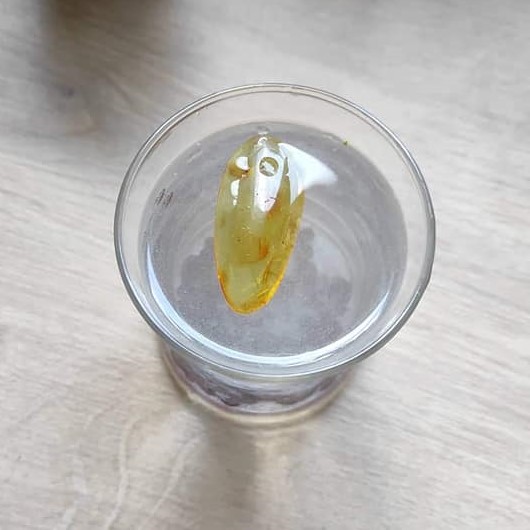- Návody
- 1 likes
- 3991 views
- 0 comments
Amber is so amazing! One piece is more beautiful than the other. But you can also find fake amber, various plastics and slides, or so-called reconstructed amber on the market. Wouldn't you have thought of that? This raw material is not in endless supply and its price is rising. That is why it is worthwhile for fraudsters to invest in various methods of producing counterfeit amber.
.jpg)
There are various ways to test the authenticity of yours at home. But few attempts will not destroy it.
You can set it on fire. Yes, the real thing smells like resin, but that's about all you get. But real amber just needs to be heated by intense rubbing and you can smell the faint scent of resin too, as well as being worked into different shapes (that's the beauty of sitting in the woods). When you rub real amber with silk, it creates static electricity and attracts dust particles to itself. But first, make sure you are carrying real silk :- D
You can try scratching a small piece of real amber with a (copper) needle - small dust-like particles will flake off of real amber. You can also try etching it with acetone and alcohol and dipping the precious jewel in nail polish remover. It won't do anything to real amber, it's mature enough that a drop of alcohol won't do anything to it. It will, however, etch copals and ambroids.
You probably won't undertake complex spectrography at home if you have UV light, even that can sometimes betray you, not every piece glows as it shows in pictures and it takes a trained eye.
If you have a piece of amber without a string, you can make a home test with water and salt.
A concentration of about 15g of salt per 100ml of water should lift the amber from the bottom of the glass. This way you can tell very easily that you have resin in the glass and not plastic or glass.

What else can you find on the market that looks like amber?
Copal. Not Dedalus Kopal, the famous person from Harry Potter. Copal is the name for young amber, mined mostly outside Europe, in the Americas. It's a few million years younger, its scent is different when processed, and it's softer. It is still used by local ethnic groups in heating mixtures.
Ambroid - it's still amber, yes, but remelted and pressed from waste. Its lower price and fibrous texture may alert you to this.
Ours are of the finest quality, Baltic, from Lithuania, and you can see them, whether nuggets, bracelets or necklaces made from tumbled flat stones, half beads or perfect beads HERE. If you are interested in piece amber, send us a private message and we will send you a current offer.
Did you also know that amber is one of the first substances that man began to use for adornment in the form of jewelry, as well as talismans and amulets and funerary objects to honor the deceased as a lasting memory of life, as evidenced by finds dating back to about 8,000 BC.
In ancient times, amber was a symbol of nostalgia, sadness and often referred to the connection with tears, as a dried drop of amber is very similar to tears.
One legend says that the name amber comes from the Latin electrum and the ancient Greek electron, which was derived from elektor = shining sun.
Greek myth tells of Phaethon, son of the sun (the god Helios), who when killed by lightning, his sisters turned into poplars and their tears flowing into the river Eridanus solidified into droplets of amber.
In Scandinavia, amber is thought to be the tears of Freya, the Viking goddess of love and beauty.
Today, we often wear it for its supposed ability to soothe pain and sadness and to absorb negative energies and induce harmony. It is also a favourite with parents as a piece of jewellery for babies who are teething. The succinic acid contained in amber (mostly in the milky ones) is supposed to help with pain.
Thank you for reading this far :)

Comments (0)